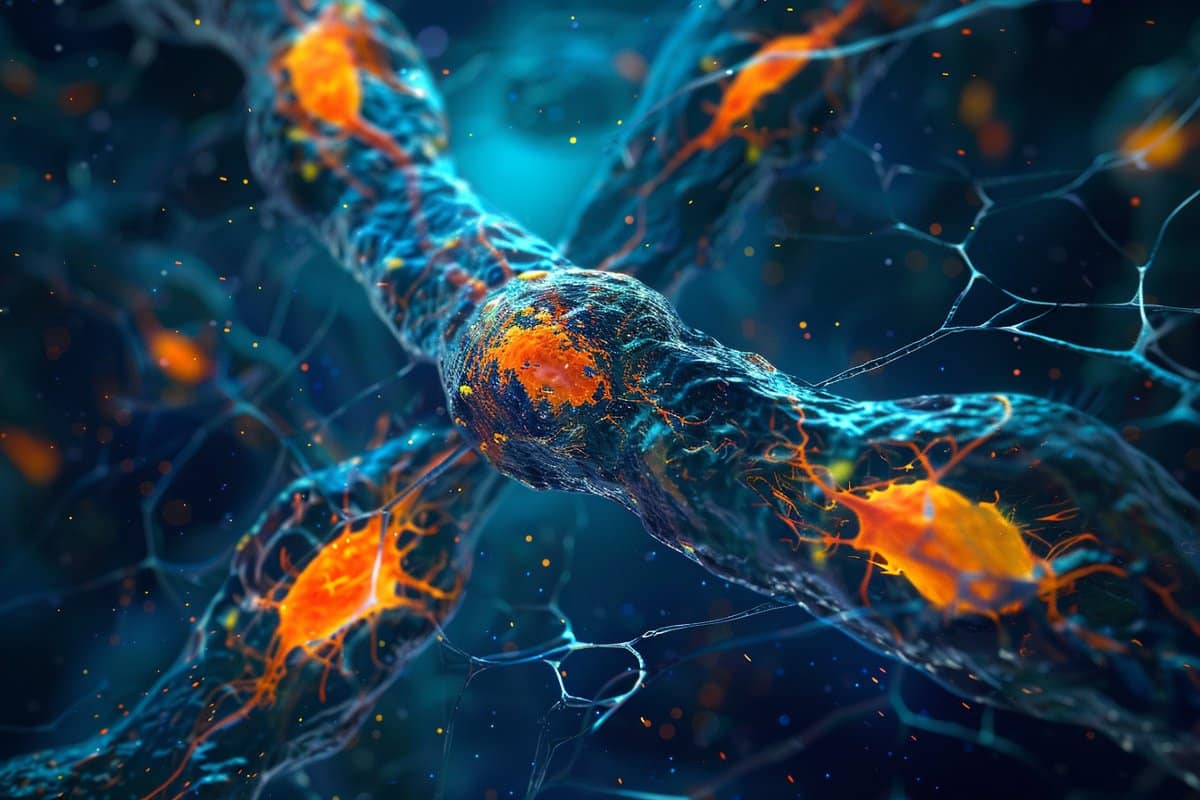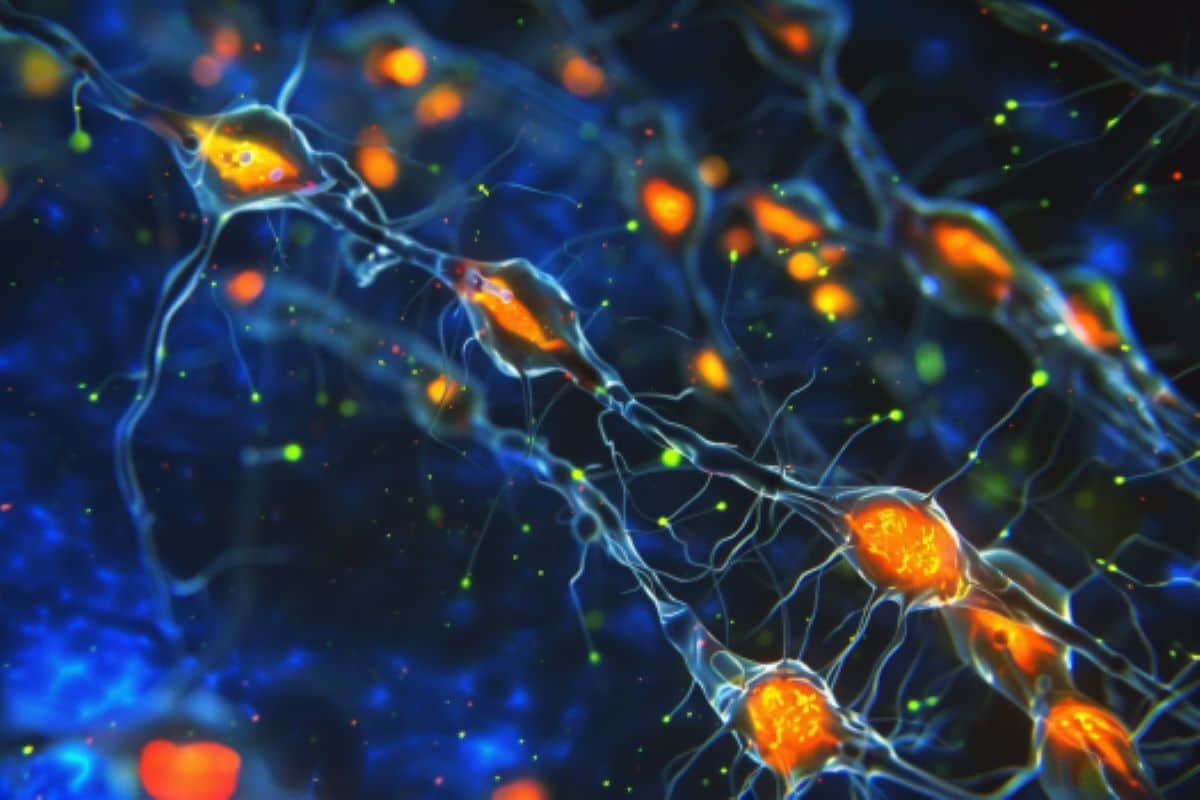Summary: Researchers have made a groundbreaking discovery, identifying a rare lipid as a crucial factor in ferroptosis, a unique form of cell death. This lipid, characterized by its two polyunsaturated fatty acyl tails, plays a significant role in various conditions, including neurodegenerative diseases and cancer. The findings could revolutionize our approach to treating these diseases by either preventing or inducing ferroptosis.
Key Facts:
- Discovery of diPUFA Lipids: A rare lipid with two polyunsaturated fatty acyl tails, known as diPUFA phospholipid, has been found to significantly promote ferroptosis in cells, including those in aging brains and Huntington disease-affected brain tissue.
- Potential for Disease Treatment: Understanding the role of diPUFA lipids in ferroptosis opens new avenues for treating neurodegenerative diseases and cancer, by either preventing or inducing cell death.
- Interdisciplinary Research: The research was a collaborative effort by Columbia’s Department of Biological Sciences, Department of Chemistry, and the Columbia University Irving Medical Center, highlighting the interdisciplinary approach to uncovering the mechanisms of ferroptosis.
Source: Columbia University
Columbia researchers have found that a rare type of lipid is a key driver of ferroptosis, a form of cell death discovered by Columbia professor Brent Stockwell.
The findings provide new detail on how cells die during ferroptosis and could improve understanding of how to stop ferroptosis in contexts where it is harmfully occurring– in neurodegenerative diseases, for example– or induce it in contexts where it could be useful, such as using it to kill dangerous cancer cells.
The new research found that a rare type of lipid with two polyunsaturated fatty acyl tails, called a diPUFA phospholipid, was present in a range of contexts where ferroptosis was occurring, including in aging brains and Huntington disease-affected brain tissue. The finding indicates that the lipid is efficient at promoting ferroptosis.
The research was conducted by professors in Columbia’s Department of Biological Sciences, Department of Chemistry, and the Columbia University Irving Medical Center.
Stockwell first discovered ferroptosis in 2012, when he found that certain cells were dying because their lipid layers were collapsing– an unusual form of cell death that differs from the most common kind, which begins with the cell forming blisters on its outer surface.
Since that discovery, researchers in Stockwell’s lab and elsewhere have continued to investigate ferroptosis, discovering that it can occur naturally in aging cells, in pathological contexts, and can be induced to treat disease.
Another paper out this month with several co-authors found that a gene named PHLDA2 can sometimes promote ferroptosis by attacking a different lipid, and that this gene can block some tumors from forming.
Together, these papers show that specific lipids promote ferroptosis, so defining the driver lipids in specific cancers is important.
“The discovery that these diPUFA lipids are important drivers of ferroptosis deepens our understanding of this form of cell death, and these lipids’ role in controlling a cell’s homeostasis in general,” Stockwell said.
“Harnessing these lipids may eventually help us identify where ferroptosis has occurred and deliberately manipulate them to either induce cell death or stop it. This can begin to give us both understanding and the power to control cell death.”
About this neuroscience research news
Author: Christopher Shea
Source: Columbia University
Contact: Christopher Shea – Columbia University
Image: The image is credited to Neuroscience News
Original Research: Closed access.
“Phospholipids with two polyunsaturated fatty acyl tails promote ferroptosis” by Brent Stockwell et al. Cell
Abstract
Phospholipids with two polyunsaturated fatty acyl tails promote ferroptosis
Highlights
- Dietary PC-PUFA2s induce ferroptosis in various cancer cell lines
- Dietary PUFA selectively increases PC-PUFA2 accumulation in cells
- PL-PUFA2s exhibit interaction with mitochondrial ETC complex I
- PC-PUFA2s induce mitochondrial ROS production essential for ferroptosis
Summary
Phospholipids containing a single polyunsaturated fatty acyl tail (PL-PUFA1s) are considered the driving force behind ferroptosis, whereas phospholipids with diacyl-PUFA tails (PL-PUFA2s) have been rarely characterized. Dietary lipids modulate ferroptosis, but the mechanisms governing lipid metabolism and ferroptosis sensitivity are not well understood.
Our research revealed a significant accumulation of diacyl-PUFA phosphatidylcholines (PC-PUFA2s) following fatty acid or phospholipid treatments, correlating with cancer cell sensitivity to ferroptosis.
Depletion of PC-PUFA2s occurred in aging and Huntington’s disease brain tissue, linking it to ferroptosis. Notably, PC-PUFA2s interacted with the mitochondrial electron transport chain, generating reactive oxygen species (ROS) for initiating lipid peroxidation. Mitochondria-targeted antioxidants protected cells from PC-PUFA2-induced mitochondrial ROS (mtROS), lipid peroxidation, and cell death.
These findings reveal a critical role for PC-PUFA2s in controlling mitochondria homeostasis and ferroptosis in various contexts and explain the ferroptosis-modulating mechanisms of free fatty acids. PC-PUFA2s may serve as diagnostic and therapeutic targets for modulating ferroptosis.

Dr. Thomas Hughes is a UK-based scientist and science communicator who makes complex topics accessible to readers. His articles explore breakthroughs in various scientific disciplines, from space exploration to cutting-edge research.








